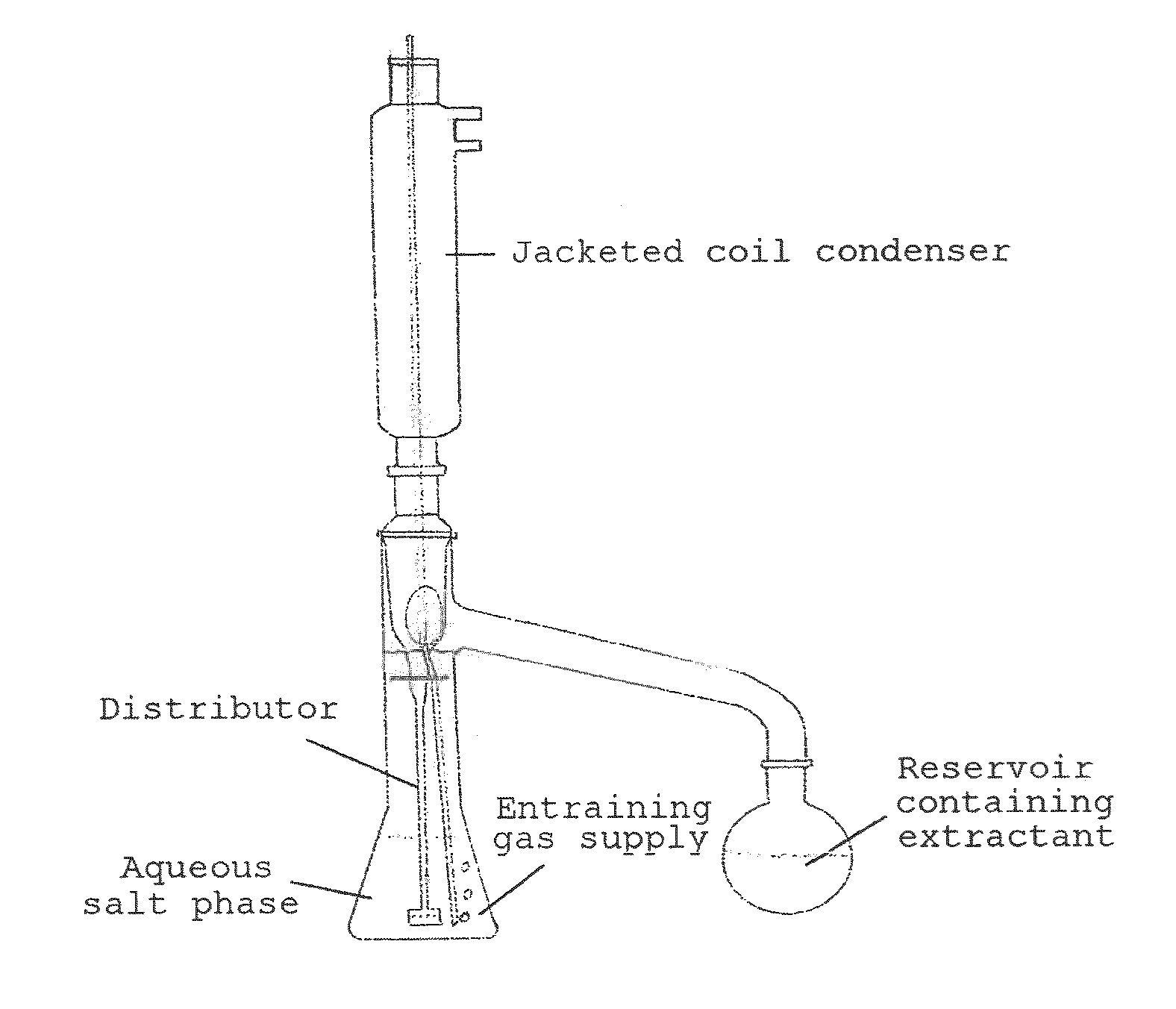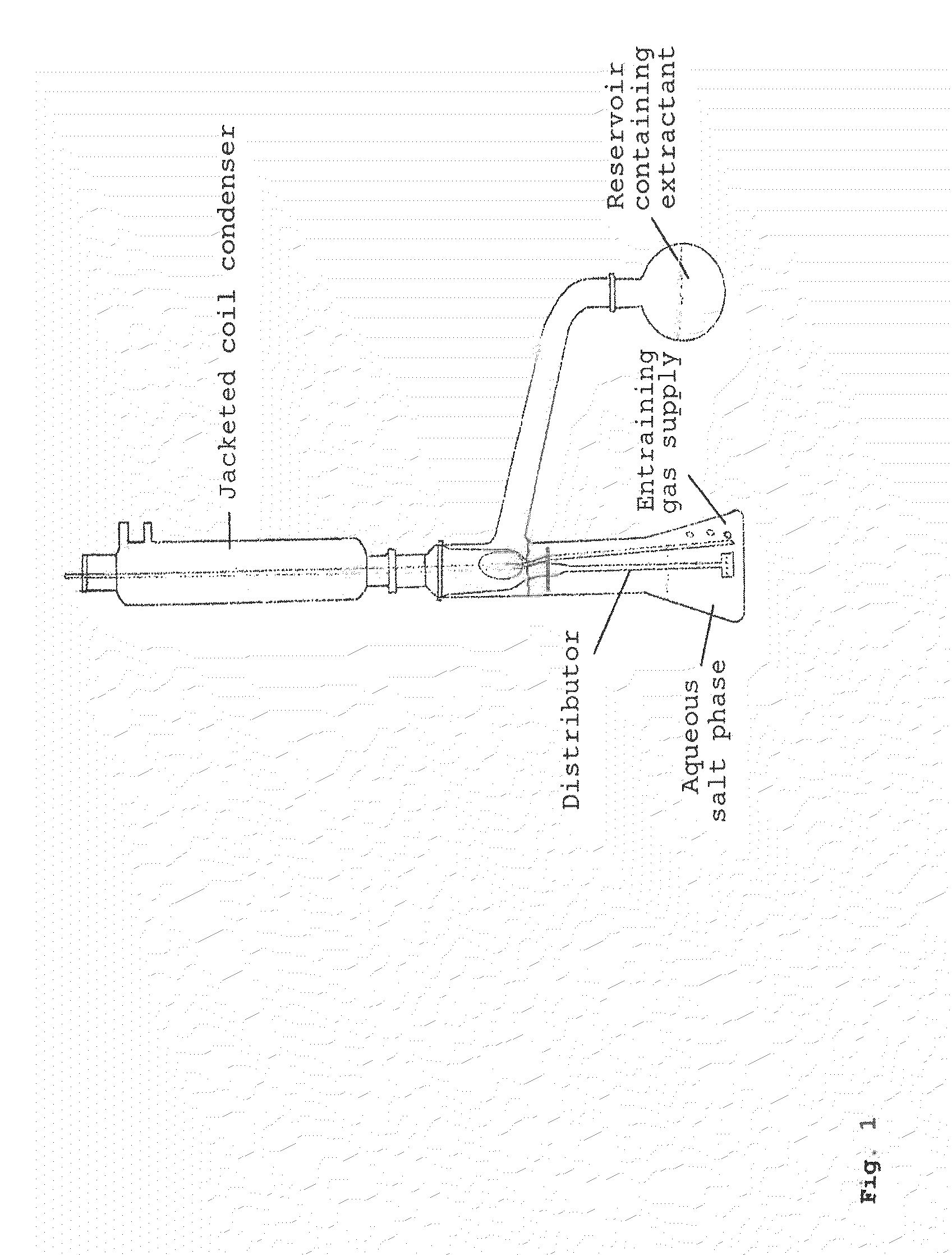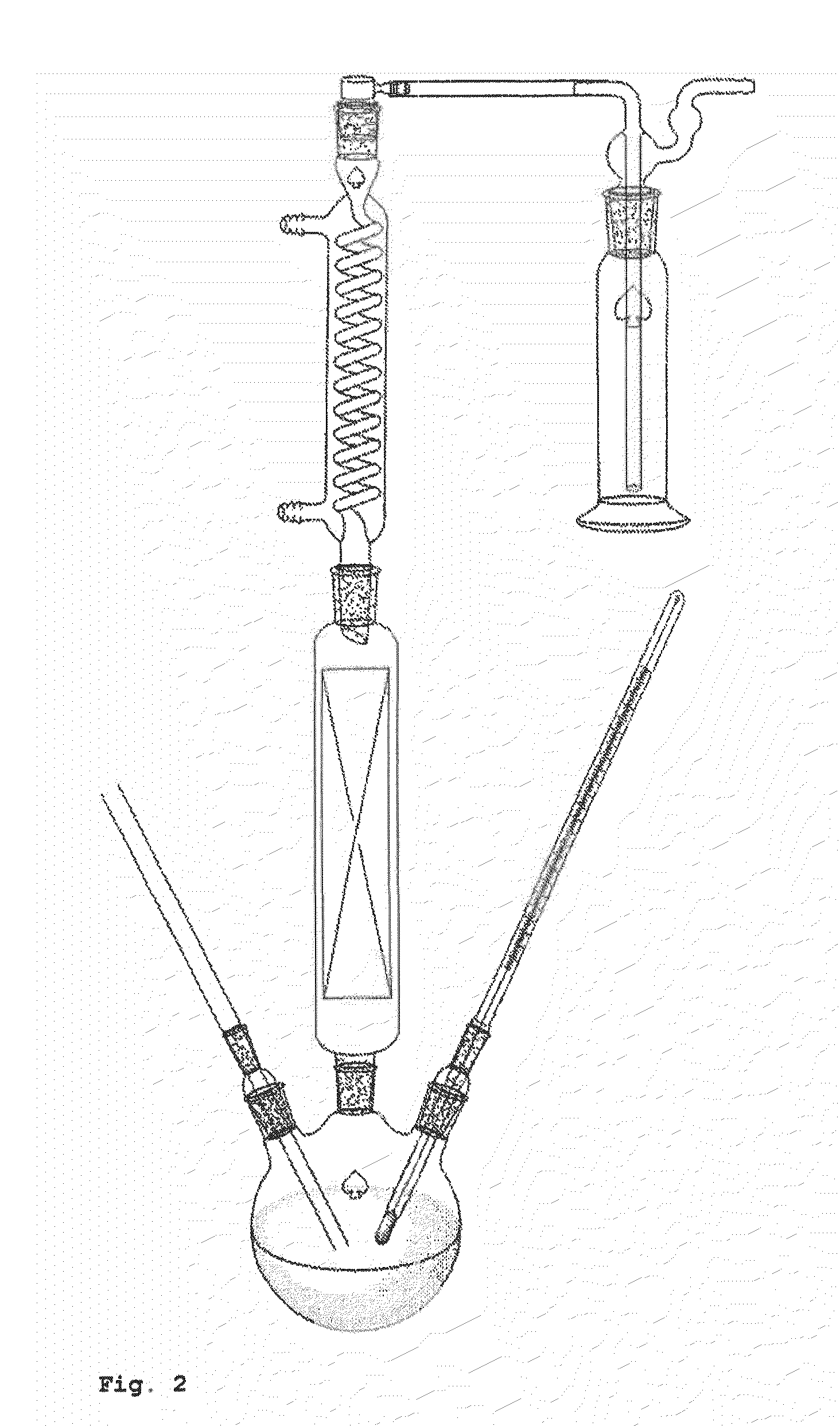Method for producing a free acid from the salt thereof
- Summary
- Abstract
- Description
- Claims
- Application Information
AI Technical Summary
Benefits of technology
Problems solved by technology
Method used
Image
Examples
example 1
Reactive Extraction of 2-Hydroxyisobutyric Acid from a 10% by Weight Ammonium 2-Hydroxyisobutyrate Solution with Diisotridecylamine
[0108]The example described hereinafter was performed in the apparatus shown in FIG. 2.
[0109]A three-neck flask was initially charged with 85.07 g of a 10% by weight ammonium 2-hydroxyisobutyrate solution and 85.04 g of diisotridecylamine. The two phases were mixed vigorously with a magnetic stirrer. The 3-neck flask was heated to 95° C. at ambient pressure in an oil bath. A glass frit for nitrogen stripping was inserted into one of the lateral orifices of the flask, and a gas flow of 20 l / h was established. A thermometer to measure the internal temperature was inserted into the second lateral orifice. A column with random packing (approx. 0.7 m) was inserted into the remaining orifice of the 3-neck flask. At the upper end of the column was mounted a jacketed coil condenser. Connected thereto was a wash bottle filled with 107.66 g of dilute sulphuric aci...
example 2
Reactive Extraction of 2-Hydroxyisobutyric Acid from a 10% by Weight Ammonium 2-Hydroxyisobutyrate Solution with Trihexylamine
[0110]The example described below was performed in the apparatus shown in FIG. 2.
[0111]A three-neck flask was initially charged with 99.53 g of a 10% by weight ammonium 2-hydroxyisobutyrate solution and 55.07 g of trihexylamine. The two phases were mixed vigorously with a magnetic stirrer. The 3-neck flask was heated to 95° C. at ambient pressure in an oil bath. A glass frit for nitrogen stripping with a gas flow of approx. 20 l / h and a thermometer to measure the internal temperature were inserted into the lateral orifices of the flask. A column with random packing (approx. 0.7 m) was inserted into the remaining orifice of the 3-neck flask. At the upper end of the column was mounted a jacketed coil condenser. Connected thereto was a wash bottle filled with 99.79 g of dilute sulphuric acid (1 mol / l), in which the ammonia which had been stripped out was absorbe...
example 3
Reactive Extraction of 2-Hydroxyisobutyric Acid from a 10% by Weight Ammonium 2-Hydroxyisobutyrate Solution with Trioctylamine (TOA)
[0112]The example described below was carried out in the apparatus described in FIG. 2.
[0113]A three-neck flask was initially charged with 200.53 g of a 10% by weight ammonium 2-hydroxyisobutyrate solution and 200.12 g of TOA. The two phases were mixed vigorously with a magnetic stirrer. The 3-neck flask was heated to 95° C. at ambient pressure in an oil bath. A glass frit for nitrogen stripping with a gas flow of 20 l / h and a thermometer to measure the internal temperature were inserted into the lateral orifices of the flask. A column with random packing (approx. 0.7 m) was inserted into the remaining orifice of the 3-neck flask. At the upper end of the column was mounted a jacketed coil condenser. Connected to this was a wash bottle filled with 60.04 g of dilute sulphuric acid (1 mol / l), in which the ammonia which had been stripped out was absorbed fo...
PUM
| Property | Measurement | Unit |
|---|---|---|
| Temperature | aaaaa | aaaaa |
| Temperature | aaaaa | aaaaa |
| Percent by mass | aaaaa | aaaaa |
Abstract
Description
Claims
Application Information
 Login to View More
Login to View More - Generate Ideas
- Intellectual Property
- Life Sciences
- Materials
- Tech Scout
- Unparalleled Data Quality
- Higher Quality Content
- 60% Fewer Hallucinations
Browse by: Latest US Patents, China's latest patents, Technical Efficacy Thesaurus, Application Domain, Technology Topic, Popular Technical Reports.
© 2025 PatSnap. All rights reserved.Legal|Privacy policy|Modern Slavery Act Transparency Statement|Sitemap|About US| Contact US: help@patsnap.com



